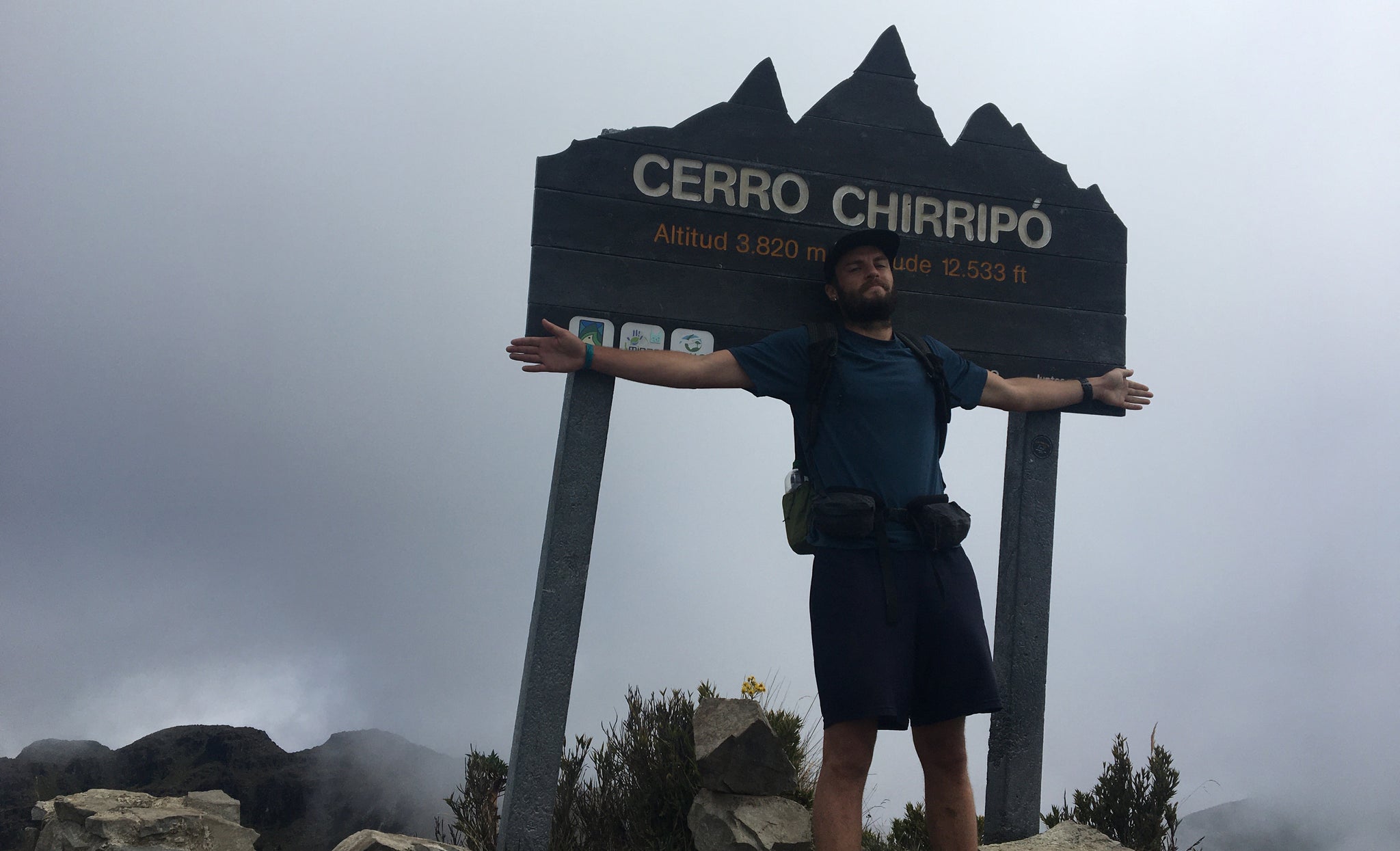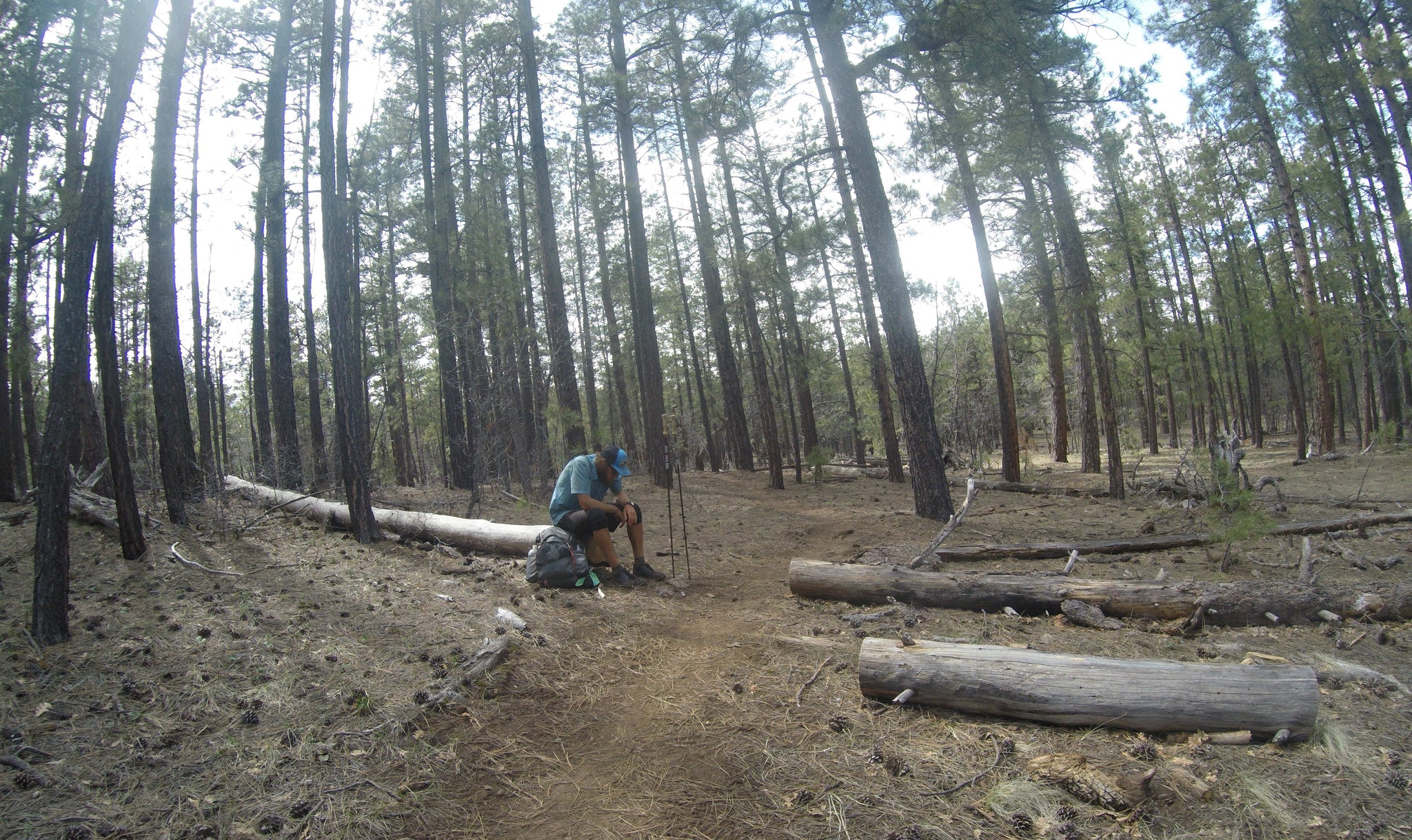Words & photos by Jeff Garmire
Thirty thousand miles and always counting, give or take a few yards or inches, all done on foot. Jeff Garmire (@thefreeoutside) is still heading out whenever he can to "make up for 2020." Some of these miles were racked up diesel engine-style, nice and steady, all day long. Some were covered with a cinderblock on the gas pedal. Can both approaches overlap? Jeff believes they can and do, and this month, in response to some of the questions posed by our readers in August, he explains how.
Each month, Jeff will send out a call for your questions in our Instagram feed and answer them there or in new posts in The Shakedown section of our blog. Put your thinking caps on folks, and journey into Jeff's brain. Who knows what'll you'll learn!

Fastest Known Times (FKTs) are speed records on the trails. It is essentially trying to set the fastest time over a set route. FKTs have exploded in popularity over the last few years and now straddle the line between runners, thru-hikers, and adventurers. It is the great equalizer of having a simple goal of completing a route in a set time, yet also having to deal with the numerous challenges along the way without the organizational structure of a race.
I started seriously going after FKTs in 2019. It became a transition from long adventures and goals to fast ones. I had completed two trips over 7,000 miles and was ready to push myself in a new way. So, I dove into the FKT world with the Arizona Trail. It was a challenge filled with so much learning, adapting, and finding my style. The simple yet complicated task of trying to break established records on trails and coming at it as a thru-hiker helped me in numerous ways. Unique style, techniques, and strategies helped me accomplish new records on these trails, and here are some of the things I learned in line with the questions you asked last month.
How do you train for FKTs?
Like running a race, climbing a peak, or conquering any goal, each FKT and challenge is different. Some deal with heat, others elevation, and others length. I try to focus my training on being specific to each trail and my strategy to establish a new FKT. For example, leading up to the Long Trail FKT attempt, I hiked the Pinhoti Trail (also setting the FKT) to get used to bugs and humidity. I then traveled out to the Sierra Nevada mountains to log 40 miles day after day to be ready for the big six-day push that the Vermont record would require. On shorter attempts, I have increased my efficiency in climbing hills and quickly transitioning to running down them.

The most significant advantage I have on traditional runners is my ability to eat, refill water, and even take short breaks without ever having to take my pack off. Sharpening these skills and assuring I know exactly where everything is in my bag is the key to showing up to an FKT attempt with the highest chance of success. It is not only training my body but reminding my mind how to efficiently set up camp to sleep, get water, and pack a bag at the beginning of each day. When an adventure's success is determined by time, each minute counts.
How do you plan for FKTs?
The primary part of planning for FKTs is deciding which style is the best. Coming from the backpacking and thru-hiking world, I often lean toward unsupported types of adventures. Essentially, I am allowed no outside help during my attempt. The other major style is supported attempts in which an athlete is allowed to have pacers and a crew. Going after records unsupported helps maximize my strength and equalize any gaps with trail runners that lack the long-extended stays in the woods that are a huge part of my background.
My greatest strength is efficiency and continuing to move forward. I do my FKT planning to accentuate this style. I try to find long but manageable sections between resupplies and focus on consistently moving much of the time others are sleeping. I realized how different this strategy was from many ultrarunners when I raced the 256-mile Cocodona 250 this year. Most runners slept a handful of hours each night, but I was able to drop my sleep to near zero and make up any ground their more prominent running background gave them. I try to use this same style in planning for trail records.

I am used to carrying, rationing, and efficiently consuming multiple days of food, so when a runner may resupply every two days, I am comfortable carrying many days at one time and eliminating the precious hours that a side trip to resupply in town would require. I also plan for things to go wrong. If I have a bad day, I know exactly how and where I need to make up those miles and that time later in the attempt. Acknowledging that nothing ever truly goes according to schedule really allows me the peace of mind to know that I can fight through mistakes, bad days, or the unknown challenges that await during an FKT attempt.
What is nutrition and fueling like on FKTs?
Most of the FKTs I have completed have been multiday efforts, and fueling is paramount. Failing to fuel properly leading up to efforts or early on in them has led to poor outcomes. In 2019 I made an attempt at the Nolans 14 record. The route connects 14 different 14,000' peaks in Colorado for about 100 miles. I did not take fueling my body seriously leading up to the event, and by the second peak, I knew it was not my day. The energy simply was not there.

I have always had a sensitive stomach when pushing the envelope, and I try to find new ways to fuel. However, a record-breaking attempt is not the time to try something new. I have a few set things that work on short and fast efforts and a wider variety of nutrition and calories that work on longer and more sustained efforts. Since I have to carry everything I consume, I focus on electrolytes and fluids first and then hard sustainable foods with a high calorie per ounce. At a fast pace, sometimes the body doesn't feel the same hunger that a slower hike will lead to, but maintaining a schedule—like eating every hour—helps reduce the risk of bonking. There are many different styles of food and calories people consume. I have never been able to drink calories; it works great for some people, but simply having electrolytes in my water has proven the most my stomach is capable of handling. Then, for calories, I like a combination of simple carbohydrates, like Stroop waffles, bars, and granola, along with a few saltier things to balance the diet out.
Fueling is so individual that it should be nested under training because learning what works is a huge part of showing up to an FKT attempt, ready to give it your best shot. The true success of an FKT isn't overcoming challenges but reducing the number that may present themselves. There will be hurdles for everyone, but if a person has half as many as the next person, they are much more likely to achieve their goal.
Jeff Garmire is a writer and author. When he isn't adding to his 30,000 trail miles, he can be found on the trails and in the mountains around Bozeman. He is the author of Free Outside, which chronicles his Calendar Year Triple Crown.























